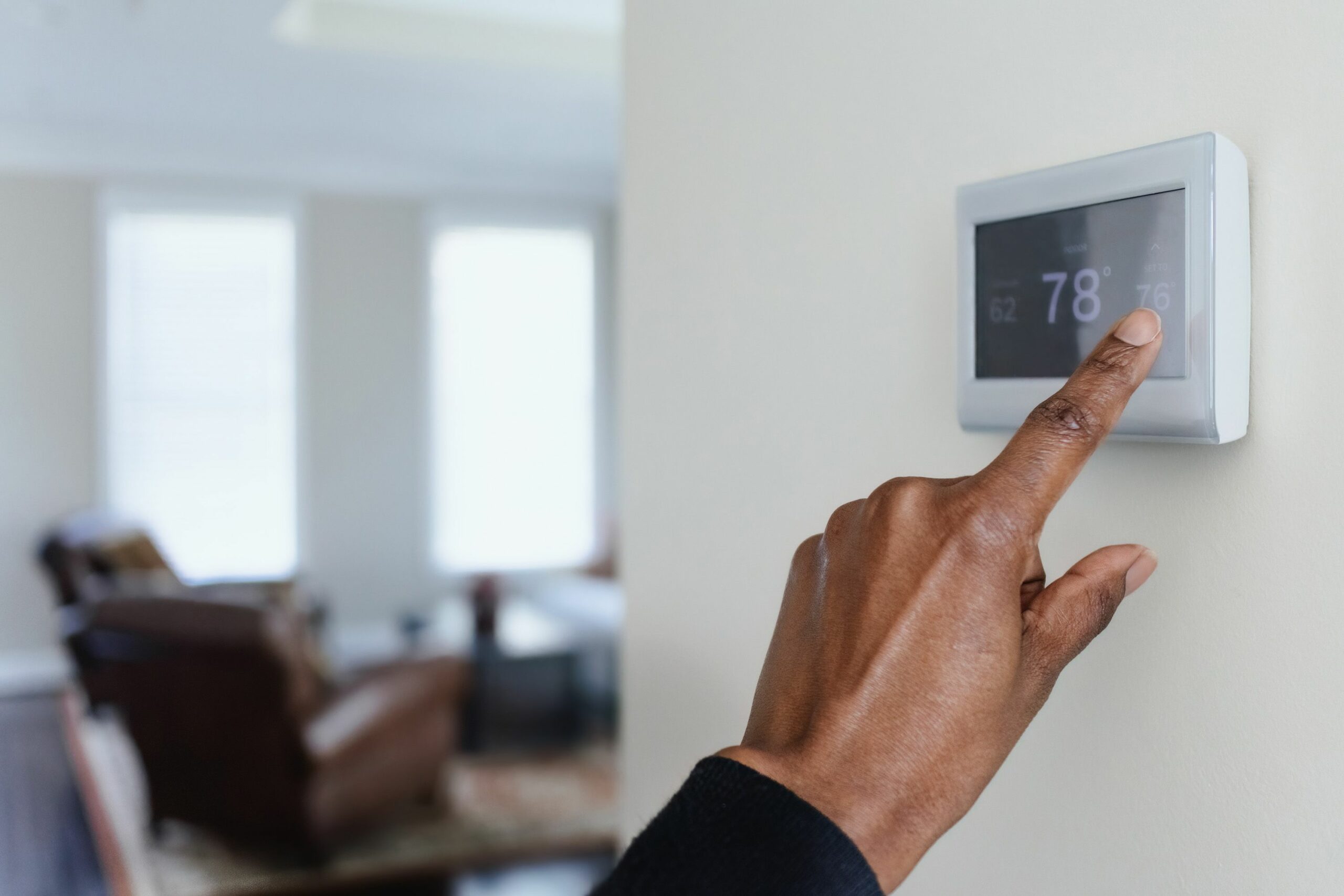As exciting as a vacation can be, preparing you home for it can still be stressful. From arranging to have the mail taken in to making sure your plants stay watered while away, the pre-trip chore list can seem never-ending. To add to it, factors such as weather are out of your control—which means setting your thermostat correctly can be a challenge.
Of course, there are factors to consider, such as the time of year you’re traveling, your home climate, and whether or not pets will be left behind (with a sitter, of course). But, there is a general rule of thumb you can follow. Regardless of the season and your specific climate, never turn your HVAC system off entirely while you’re on vacation. When it’s on the warmer side, humidity can rise (leading to mold and mildew), and if it’s starting to get chilly, pipes can freeze.
To find out what a thermostat should be set to once you enter vacation mode, we spoke with an HVAC pro. We’ll break it all down for you so you can save energy and maintain a comfortable environment for your home.
How to Set Your Thermostat for Vacation in the Summer
According to Randy Huckstadt, HVAC expert with JustAnswer, “The most energy efficient setting is 78 degrees, as it’s a happy medium between too hot or too cool.” This general rule of thumb applies to most geographic regions in the United States, but, as Huckstadt adds, you might need to adjust this number slightly if you live in an area that experiences extreme temperatures.
For example, in sweltering Arizona or Texas summers, you’re better off bumping the thermostat up to 80 degrees. “You don’t want to set it to a lower temperature when it’s hotter as that will cause more energy usage,” Huckstadt says. He explains that choosing a temperature that’s too low can cause your electric bill to skyrocket—and doesn’t actually make the house feel much cooler. With that said, Huckstadt recommends setting the thermostat one degree higher for every five degrees over 95.
Another important factor to keep in mind is that humidity levels will rise if you cut the AC while you’re away in the summer. That puts things such as artwork, electronics, and your clothing, shoes, or bags at risk of being damaged, particularly if you’re gone for a longer period of time. You can still follow Huckstadt’s 78-degree rule, but if you live in a less muggy climate and want to save more energy, that number can be flexible, so long as it doesn’t exceed 85 degrees. If your thermostat has a dehumidification setting, consider using it. When you return home from vacation, gradually lower the temperature until you’re comfortable. Immediately switching it from 80 degrees to 68 won’t cool the house quicker and can shock your HVAC system.
How to Set Your Thermostat for Vacation in the Winter
While summer is one of the peak travel times, nothing beats escaping the winter blues with a tropical holiday trip. Whatever your trip of choice, the thermostat settings are equally essential this time of year. In the winter, you can certainly set the temperature lower than is comfortable for more energy savings, but always keep it above 50 degrees. If your region sees a lot of snow and ice, this is vital to avoid frozen pipes, which can be a pain to return home to. Another preventative measure includes leaving the cabinet doors under kitchen and bathroom sinks open while you’re away so the pipes are exposed to warmer air.
Thermostat Considerations for Pets and Sitters
Some people prefer to leave their pets at home under the care of a sitter rather than board them while on vacation. If that’s your go-to method, it’s important to keep them in mind when setting the thermostat before you depart. You can ask your vet for their opinion on the ideal temperature for your pet, or add adjusting the temperature to the pet sitter’s tasks.
When in doubt, program your thermostat to run as it would if you were home. As Huckstadt puts it, “Treat them as you would the people in the house.” Your pets deserve to feel as comfortable as possible, especially when you’re away from them, so it’s better to have peace of mind than to save some money on the next electric bill.
More Thermostat Tips to Consider Before Vacation
In addition to programming the thermostat correctly, there are a few extra steps you can take to lower your energy costs while maintaining a safe and comfortable temperature.
Close curtains and blinds: Doing so helps preserve the cool or warm indoor air while simultaneously keeping the hot or cold temperatures outside, depending on the season. This serves a double purpose: it prevents nosy passerbys from peering in and wondering if anyone is home. If you’re leaving behind pets who love to look out the window, leave the treatments open on their favorite one.
Change the air filters: Use going on vacation as an excuse to replace your home’s air filters so that the HVAC system can run smoothly without needing to put in overtime.
Consider a smart thermostat: Before you budget your next getaway, think about setting aside some funds and having a smart thermostat installed if you haven’t already. Aside from being more energy and cost-efficient, you can use Wi-Fi to monitor—and adjust as needed—your home’s temperature levels while away.



